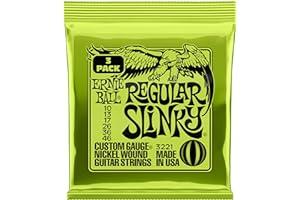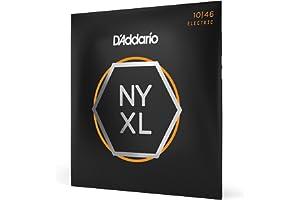Best Selling Electric Guitar Strings
Electric guitar strings are a vital part of any electric guitar. They provide the sound that the guitar produces, and they can make a big difference in the overall tone and feel of the instrument. There are many different types of electric guitar strings available, each with its own unique set of characteristics. Choosing the right strings for your guitar can be a challenge, but it's an important one that can have a significant impact on your playing experience.
Links to Best Selling Electric Guitar Strings
Types of Electric Guitar Strings
Electric guitar strings are typically made from one of three materials: steel, nickel, or nylon. Steel strings are the most common type, and they offer a bright, articulate tone. Nickel strings are slightly warmer and mellower than steel strings, and they are often preferred by players who play with a lighter touch. Nylon strings are typically used on acoustic guitars, but they can also be used on electric guitars for a unique sound.
In addition to the material, electric guitar strings are also available in a variety of gauges. The gauge of a string refers to its thickness, and it is measured in thousandths of an inch. The higher the gauge number, the thicker the string. Thicker strings produce a lower tone, while thinner strings produce a higher tone.
The most common gauges for electric guitar strings are 9-42, 10-46, and 11-52. These gauges are a good starting point for most players, but you may need to experiment with different gauges to find the ones that sound and feel best for you.
Choosing the Right Strings for Your Guitar
When choosing electric guitar strings, there are a few factors you need to consider.
- The type of guitar you play.
- The style of music you play.
- Your playing technique.
- Your budget.
If you're not sure what type of strings to choose, it's a good idea to consult with a guitar salesperson or a professional guitar teacher. They can help you find the strings that are right for your needs.
How to Change Electric Guitar Strings
Changing electric guitar strings is a relatively simple process, but it's important to do it correctly to avoid damaging your guitar. Here are the steps involved in changing electric guitar strings:
- Remove the old strings.
- Clean the fretboard.
- Thread the new strings through the bridge.
- Tune the strings.
For more detailed instructions on how to change electric guitar strings, you can consult a guitar instruction book or watch a video tutorial online.
Conclusion
Electric guitar strings are an important part of any electric guitar. They can make a big difference in the overall tone and feel of the instrument, so it's important to choose the right strings for your needs. By considering the factors discussed in this article, you can find the perfect strings for your guitar and improve your playing experience.

